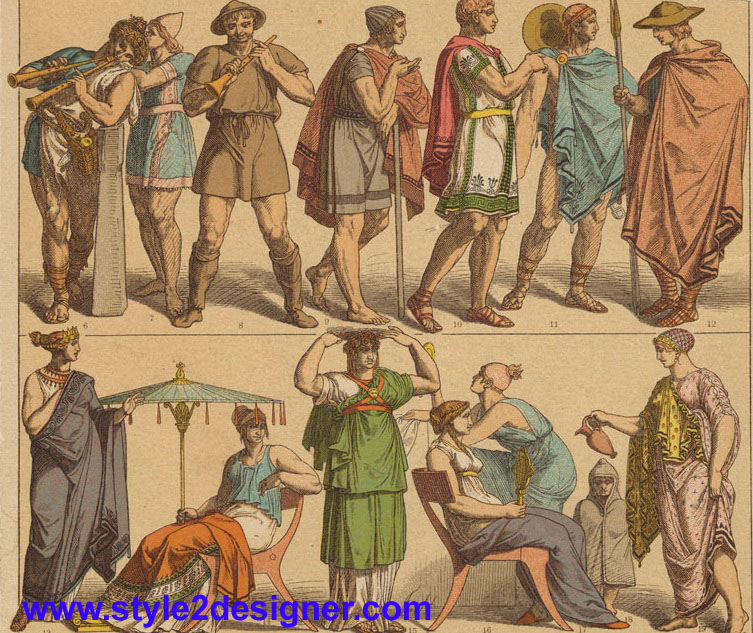Ancient Clothing Techniques -
The earliest civilizations in the Middle East part were the king domof Sumer…. Ancient Sumerians experienced the method of making objects from copper, silver and gold by heating metal ore and pouring it into molds.,
Metal workers of that period were very skilled and inventing engraved neck chains, daggers, head caps and helmets. Also Sumerians made some important and memorable invents by combining copper and tin material, they created bronze which is very strong alloy that could be used to make axes, spears an more robust helmets.
Moreover earlier Sumerians wore colorful robes with scalloped hemming. Musicians and dancers wore sleeveless robes with multi-tiered skirts. Sovereigns had tall head dresses.
Soldiers wore knee-length tunics with scalloped hems and lengthy cloaks fastened at neck area.,
Mostly soldiers fought with long gouges and wore pointed helmets. The manufacture of cloth for export purpose was very imperative to the economy and culture of ancient Sumerian. Although, they had a goddess of weaving and clothing apparels which is called Uttu.
Sumerian men concentrate a bunch of consideration to their hair. A golden helmet originate in a majestic tomb in the ancient city of Ur is impressed with hair and ears, illuminating that warriors wore their hair in a complicated style - hanging own in curly approximately around the ears, braided at the front and fastened in a knot at the back of the head as Indian traditional.

A similar braided hairstyle is shown in a bronze head of King Sargon who ruled thelandofAkkad, just to the north ofSumer. In addition to his elaborate hairstyle, the king also sported a splendid curled beard, carefully trimmed to fall in two tiers.
Nature Dyeing
Ancient people colored their clothes by the method of dyeing which are finished from the natural dyes earth, flowers and bark and in various parts of the world people still use these natural dyes. A variety of clay called ocher generates warm reds, oranges and yellows.
The indigo plant makes a deep blue while the madder root gives a rich scarlet. Some lichens create a green color, while the bark and husks of walnut dye generates deep brown color.
Even in the earliest civilizations, color and pattern were very essential. This painted plaque from the twelfth century BCE illustrates a woman from North Africa and a person fromSyria, both dressed in colorful costumes.
The very initial elements used to make jewelry are shells. These are carved early and painted ornaments reflect an ancient tradition of jewelry making.
Comments
Post a Comment